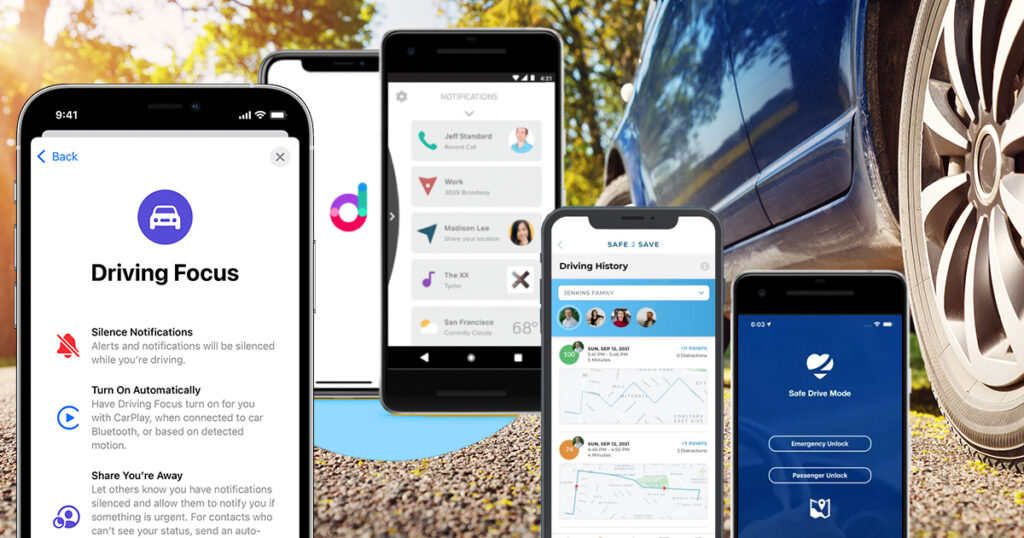When young, inexperienced drivers are getting behind the wheel, safety concerns are always paramount for their loved ones. And for today’s teenagers, who are learning to navigate the roads in the digital age, the potential for distracted driving might be higher than at any other point in history. (After all, young drivers in preceding generations did not have to deal with potential distractions such as incoming text messages or emails.)
Consider this: According to statistics from the National Highway Traffic Safety Administration (NHTSA), drivers ages 15 to 20 accounted for a higher percentage of distracted driving-related fatalities than any other age group in the United States in 2020 (at 7% of the 3,100-plus total deaths). Further, distracted driving was cited as the cause of an estimated 8% of all fatal wrecks in 2020, along with an estimated 14% of all crashes resulting in injuries. In addition, according to a 2019 survey of U.S. high school students, nearly 40% of surveyed students reported that they had texted or emailed while driving in the preceding 30 days.
How Can You Best Limit Cell Phone Distractions While Driving?
Fortunately, though, technology does not always have to be detrimental to safe driving habits. By implementing the right device settings, software and behaviors, teenagers and their elder counterparts can greatly reduce their chances of distracted driving and, as a result, stay significantly safer on the roads.
Understanding the dangers of cell phone usage while driving is likely the biggest responsibility of teen cell phone ownership. Parents looking to cut the risks of distracted driving by their teens (and themselves) can consider these five tips for fostering safer and distraction-free driving:
- Implement safer settings: Today’s smartphones can recognize when a user is in a moving vehicle and their settings can be adjusted to silence or limit notifications about incoming text messages (and other phone-based communications) during these times.
On Apple devices running iOS 15 or later, the Driving Focus feature can be enabled by:
– going to Settings, choosing Focus, then tapping Driving
– following the instructions on the screen to choose preferred options, such as Allowed Notifications
– Once set up, Driving Focus can be quickly turned on or off via the Control Center. When the feature is turned on, other users will see that the driver’s device is silencing notifications, but they can still get notifications to go through by indicating that the situation is urgent.
(For users with devices running older versions of iOS, instructions for similarly silencing notifications while driving can be found here.)On Android devices, the Do Not Disturb mode can block texts, phone calls and other notifications while the user is driving. The setup for this varies depending on the specific phone type, but is typically done via going to the Settings menu and choosing either:
– Settings > Connected Devices > Connection Preferences > Driving Mode
or
– Settings > Sound > Do Not Disturb, then choosing “Turn on automatically” > “Add rule” > “Driving”
- Employ a safety-focused app: There are a number of apps available on the market that were created specifically in an effort to minimize distracted driving. A few of the most popular options here include Drivemode (available for Apple and Android devices), LifeSaver (available for Apple and Android devices) and Safe 2 Save (available for Apple and Android devices).
- Share safety-focused content: The internet is loaded with educational content and videos on the topic of distracted driving avoidance and much of it is both highly informative and highly persuasive. For parents looking to educate their kids about the dangers of distracted driving and how to avoid it, some of the top online destinations that can help include NHTSA’s distracted driving page, the Centers for Disease Control and Prevention’s (CDC’s) distracted driving resource center and the Governors Highway Safety Association’s (GHSA’s) distracted driving page, which includes details on each state’s distracted driving laws.
- Add distraction avoidance to your driving lessons: Of course, when parents are giving their children driving lessons, stressing the importance of distraction-free driving is a must. Before the driving even begins, parents can incorporate a step for turning off smartphones or engaging the safe driving-focused settings on the driver’s phone, perhaps just before or after putting seat belts on. Doing so will help make limiting on-road distractions part of the young driver’s regular pre-trip routine.
- Lead by example: Often even more effective than teaching safe-driving habits, parents’ modeling of good driving habits can go a long way toward establishing a true foundation for safe driving with kids. In addition to always obeying traffic laws and wearing a seat belt, when parents make consistent efforts to refrain from actively using their phones while driving, their children are likely to absorb the positive habits behind the wheel.
Want to harness the area’s most reliable wireless network for your family’s talk and text communications? The FTC Wireless cellular network features more than 140 local area towers along with access to AT&T’s global network. Visit ftc.net/services/wireless today to explore all of our wireless plans and promotions.




